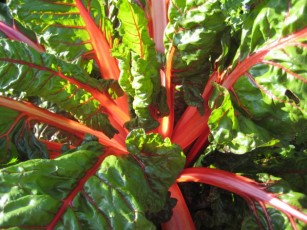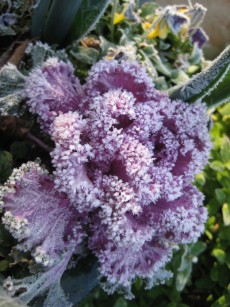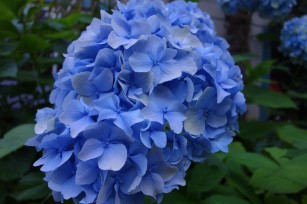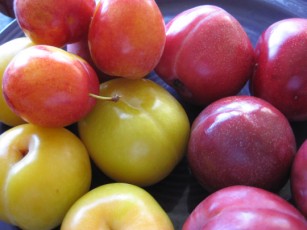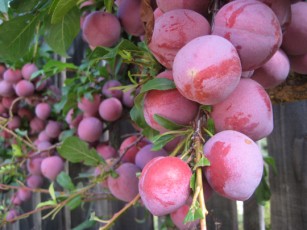My birthday falls in February and Valentine's Day does, too. The weather this month can be a bit gloomy some years. That's why I'm always thrilled to receive a flowering indoor plant to brighten things up. Many bloom for a very long time making them a good investment. They are easier than you think to take care. Color inside the house is like seeing a rainbow. Flowering plants make you smile.
My mother used to love anthuriums so I always think of her whenever I see them. Found in wet tropical mountain forests of Central and South America some varieties have the unique ability to swivel their leaves toward the sun. Anthurium andraeanum is the common variety grown mainly in Florida and the Netherlands as an indoor house plant.
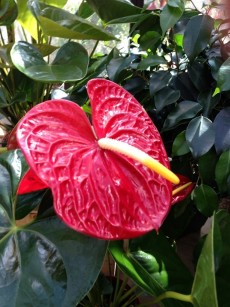 Anthuriums are durable and will survive for a remarkable period of time, even under adverse conditions. The beautiful waxy flowers along with large, heart-shaped glossy leaves are able to handle dryness around the root ball but then need to be watered thoroughly and allowed to dry slightly between waterings. They can take as much indirect light as you can provide. Lower levels of light will slow down flower production but the plant will survive just about anything. They make me think I'm in Hawaii again.
Anthuriums are durable and will survive for a remarkable period of time, even under adverse conditions. The beautiful waxy flowers along with large, heart-shaped glossy leaves are able to handle dryness around the root ball but then need to be watered thoroughly and allowed to dry slightly between waterings. They can take as much indirect light as you can provide. Lower levels of light will slow down flower production but the plant will survive just about anything. They make me think I'm in Hawaii again.
The amazing bromeliad family includes Spanish moss and the edible pineapple. Bromeliads are commonly called "air plants" but really they are epiphytes growing up in the air on tree limbs and crotches or in rock crevices, free of any connection to the ground. There are just a few species which grow on the ground and are rooted in soil. Bromeliads are distinctive as they have so many forms, textures, colorful leaves and long-lasting blooms. That's why I like them. They are among the easiest of indoor plants to grow and maintain.
I have a collection of tillandsias also in the bromeliad family. Some grow in shells, some on drift wood, some in terrariums. These are what most people think of as air plants but really they do need a lukewarm shower now and again like they would get in the tropics.
Then there are the bromeliads with bright, colorful bracts or modified leaves surrounding a tiny 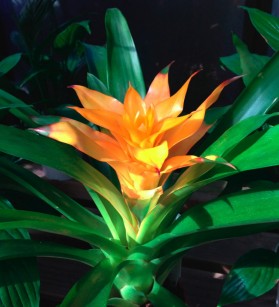 flower. Bromeliads flower only once, then send out new young offsets. All bromeliads share a common characteristic: trichomes which are tiny scales on their leaves. These scales serve as a very efficient absorption system. Bromeliads are very tolerant of drought conditions. In a normal house, it's not necessary to keep the central cup filled with water. If your plant is growing in a lot of light and you do fill the cup with water, make sure to flush it every so often to remove any salt build up.
flower. Bromeliads flower only once, then send out new young offsets. All bromeliads share a common characteristic: trichomes which are tiny scales on their leaves. These scales serve as a very efficient absorption system. Bromeliads are very tolerant of drought conditions. In a normal house, it's not necessary to keep the central cup filled with water. If your plant is growing in a lot of light and you do fill the cup with water, make sure to flush it every so often to remove any salt build up.
Bromeliads are not heavy feeders and normally live on the scanty nutrients their roots obtain from rotting leaves. During the growing season you can use a liquid fertilizer at half or quarter strength. There are so many types of bromeliads to choose from. All are beautiful and provide color for a very long time.
There a several other blooming houseplants that are also personal favorites. We all have a couple of African violets happily blooming in a windowsill. Phalaenopsis orchids are pretty easy to bring into bloom in the average house. And one of the best houseplants for a hanging basket that takes lower light levels and dry conditions is the Lipstick plant. Free-flowering in shades of orange or red, the Lipstick plant is a relative of African violet and Streptocarpus. With showy flowers they are also related to "Goldfish plants". They prefer a well-drained potting mix since they are accustomed to surviving on rainwater running off the trees in the wild.
Remember that hanging plants that are closer to the ceiling where the air is warmer will dry out faster and need to be watered more frequently.
Living plants bring the outside in, clean the air and provide color when the sky is grey.

